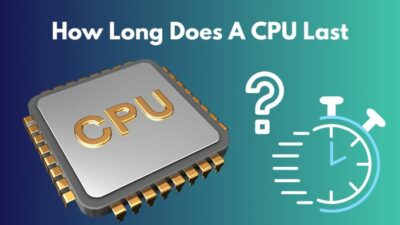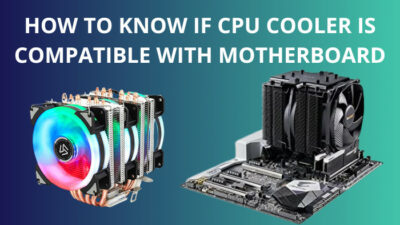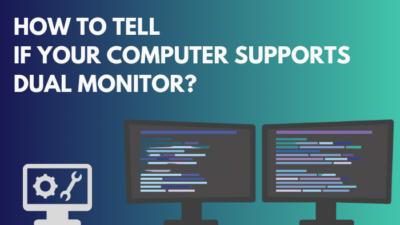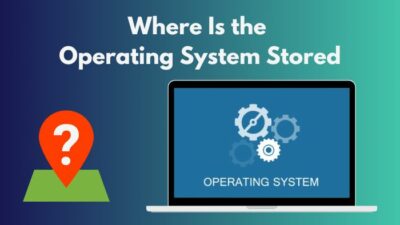Do you require a display for a PC in light of all the current technological advancements?
When you think of a desktop computer, you will visualize a mouse and keyboard combination set, a tower, and a display.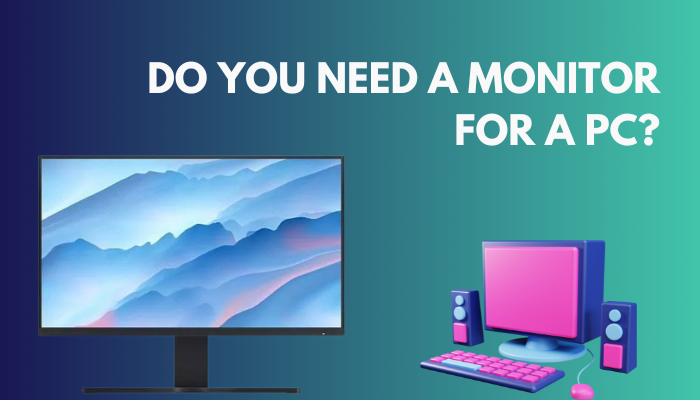 One of the significant components of the standard computer setup is the monitor. This, indeed, is how most users see material on their computers.
One of the significant components of the standard computer setup is the monitor. This, indeed, is how most users see material on their computers.
On the other hand, some computer builders and enthusiasts question whether a PC display is necessary. Below, I’ll go into further detail and provide a thorough response to your query.
Do You Need a Monitor to use a PC?
No, you don’t need a monitor to use your PC. A PC can work without a monitor. A missing display limits a PC’s functioning but isn’t completely unusable. The only thing that matters to a computer is input. The computer needs to calculate data, and it needs parts that will receive data as input. A monitor is an illustration of an output device.
However, it’s crucial to recognize this situation’s restrictions and realize why this is the case. The common misconception is that a computer cannot function without a display.
The only thing that matters to a computer at its core is input. Although the necessity of displays for users is evident, computers don’t care about output until we tell them and ask them to show us information.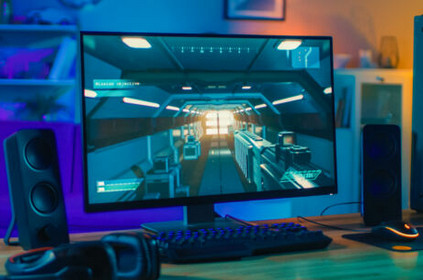
You frequently input data when using your computer to work. When you do, the computer calculates and displays the results on the monitor. However, a PC may do various identical operations in the foreground without needing a monitor to show the results.
An electronic display, sometimes known as a monitor, is a component that transforms data supplied from the PC into visual content, including images, text, and videos.
A screen can be an attached component, like a monitor, or it can be part of the computer itself, like a laptop or smartphone.
Through a data cable, a screen connects to a PC to receive data, which in turn activates electrical impulses on the screen to show the image.
The majority of PC configurations benefit greatly from having a monitor. However, a display is not a must for a PC. Other viewing options could be in your thoughts.
A few distinct possibilities are available to you due to developments in viewing technology.
In other situations, you might just want to construct and test PCs to make sure they are in good working condition. Actually, you don’t even need a monitor to do this.
In fact, a computer isn’t even bothered with whether a monitor is attached to it, even if the startup process may display information or error warnings on the monitor that are valuable to you as the user.
Related contents you should read about Dual Monitor lag on Windows.
What Can You Use Instead of Using Monitor?
You can use modern projectors instead of monitors. Sometimes virtual reality or VR headsets give the best experience, and you can use them. On the other hand, television screens are one of the great choices if you don’t want to use a monitor.
A PC does not require a display, but you will probably need some sort of interface to utilize it to its best potential. However, this need not be the conventional design that comes to mind when considering personal computers.
Here is the list of those interfaces:
1. TV Screen
The majority of TVs may serve as a PC viewing device. A suitable cord, such as an HDMI cord, can be used to connect a television to a computer.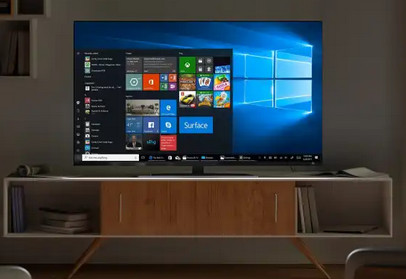 For some PC users, the fact that TVs may be much larger than monitors and exist in various sizes may be appealing. A TV could, however, be susceptible to input latency, poor visual quality, or ghosting. This could influence display selection, especially for PC gamers.
For some PC users, the fact that TVs may be much larger than monitors and exist in various sizes may be appealing. A TV could, however, be susceptible to input latency, poor visual quality, or ghosting. This could influence display selection, especially for PC gamers.
Check out the easiest way to know why Monitor Goes Black For a Second.
2. VR Headset
A PC can be used as an electronic visual display device in combination with virtual reality headsets. VR headsets, however, need specialist software to be compatible and are not currently made for direct connection to PCs.
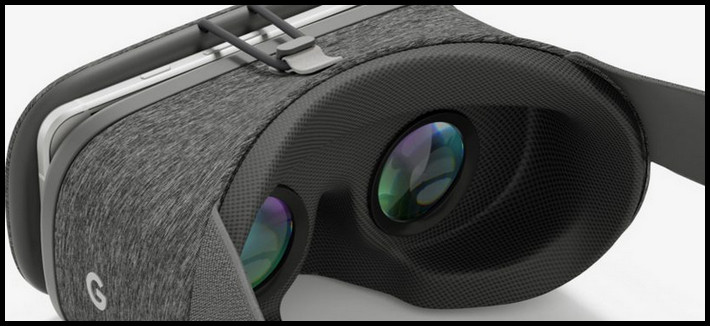 Also necessary is a primary display device like a monitor. To provide an immersive PC experience, the virtual reality headset may replicate the monitor display. These headsets may connect to numerous monitors simultaneously and might be handy due to their portability.
Also necessary is a primary display device like a monitor. To provide an immersive PC experience, the virtual reality headset may replicate the monitor display. These headsets may connect to numerous monitors simultaneously and might be handy due to their portability.
The disadvantages of utilizing a VR headset as a PC display include noticeably lower image quality, body pain, and the inability to see the mouse and keyboard. A strong PC is also necessary for a VR headset in order to run the compatible software successfully.
3. Modern Projectors
You can display an image in a projector at a bigger or smaller size than you might on a more conventional monitor, giving you greater control over how the picture is shown.
With the help of input, projectors are electrical display devices that project the matching picture onto a surface. The picture can be projected using lasers or light passing through a transparent lens.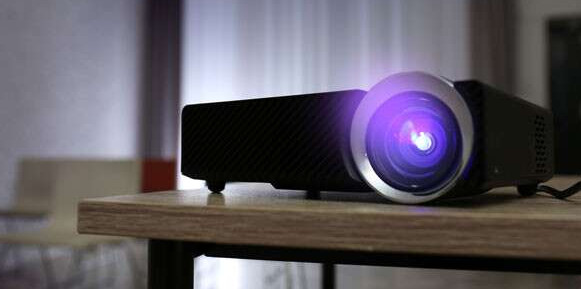 Greater viewing flexibility is made possible by a projector’s ability to change the size of the picture being projected. They have a slower input reaction time and poorer visual quality than monitors or TVs.
Greater viewing flexibility is made possible by a projector’s ability to change the size of the picture being projected. They have a slower input reaction time and poorer visual quality than monitors or TVs.
Also related to this guide about games launching on the wrong Monitor.
Why do Many People Use their PC Without a Monitor?
People use a PC without a monitor because they might need to run a particular computer for a server. Many of them use it because they have their personal choice.
Sometimes people test the computer without a monitor to ensure their PC is working correctly.
People could use a PC without a monitor for another vital reason. They might like alternative output devices. You may show data produced by your computer on a device other than a monitor.
Some individuals choose to use a certain computer as a server. A server offers support for other devices to compute data or carry out other operations. It gives other computers on the network access to the assistance it provides, despite appearing like a computer.
A computer does not require a display to function if it is being used as a server. It would function well without an associated monitor as long as the other computers could see the server on the linked or distant network.
You may test a newly built or purchased personal computer to make sure it is operational without utilizing a monitor. Without a screen, you won’t be able to use the computer or install applications. However, any computer that is regularly operating should boot up and begin running.
Any computer will run a diagnostic procedure known as the Power-On Self-Test, or POST, as soon as it is turned on.
A computer may do the POST without a display, which is how it checks that everything is functioning correctly. When you turn on the computer, everything should work as it should if you wish to test it without a monitor.
This would apply to the lights, fans, and other tower-related equipment. Mechanical drives ought to start turning as well. If none of these things occur, the machine has a problem.
You can also check some frequently asked questions to get a better picture of this topic.
Also, check out our separate post on PC airflow optimization.
FAQs
Why Does a Computer Need a Monitor?
A computer monitor is an output device that shows information in a text or graphic form. A visual display, some electronics, a housing, and a power source typically make up a monitor.
What is the Difference Between Computer Monitor and a TV?
Images on monitors are of exceptionally high clarity, accuracy, and sharpness because of their increased resolution. Televisions’ lower resolution results in smoother, more aesthetically pleasing images that are considerably easier on the eyes. Less input latency is experienced by monitors. TVs have longer input lag times.
Is it OK to Use the TV as a Computer Monitor?
Yes, you can replace your computer display with any HDMI-enabled TV.
You’ll need a graphics card with at least an HDMI 2.0 port if you’re looking at 4K TVs (HDMI 2.0a or later for HDR10 displays). This enables the use of 24-bit color at 4K at 60 Hz.
Conclusion
Most personal computers that we use on a daily basis include monitors, which are crucial components. They are the standard output devices that many people are accustomed to.
Although they are commonplace, it’s vital to keep in mind that computers can do tasks without displays as well.
You now know that some specialized machines, like servers, could not even benefit from displays. You could use one of the several graphic output choices available with your computer configuration.
Last but not least, even though a PC or laptop has a monitor as an option, you could choose to connect it to more significant or nonstandard devices for a different form of visual display.
